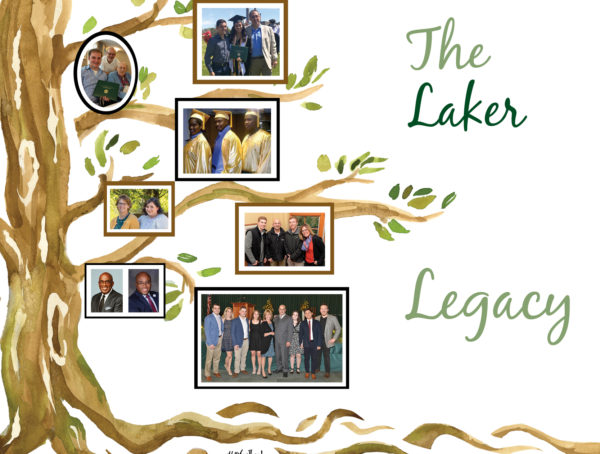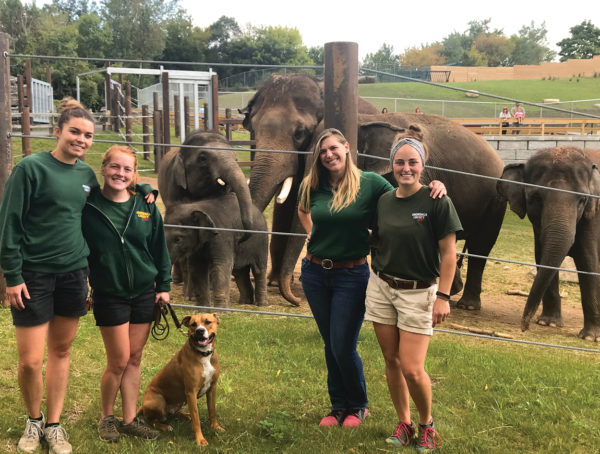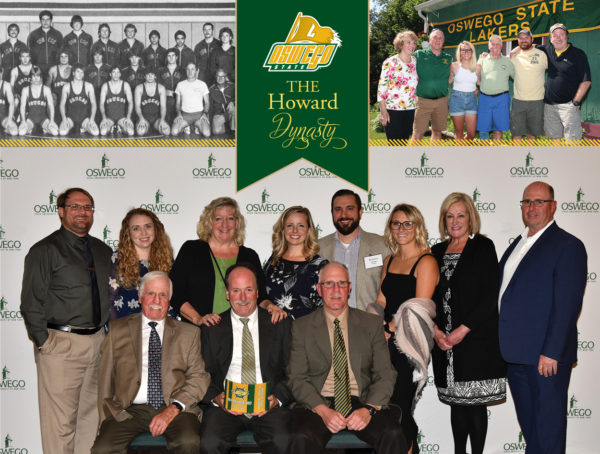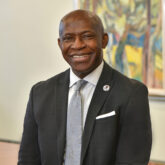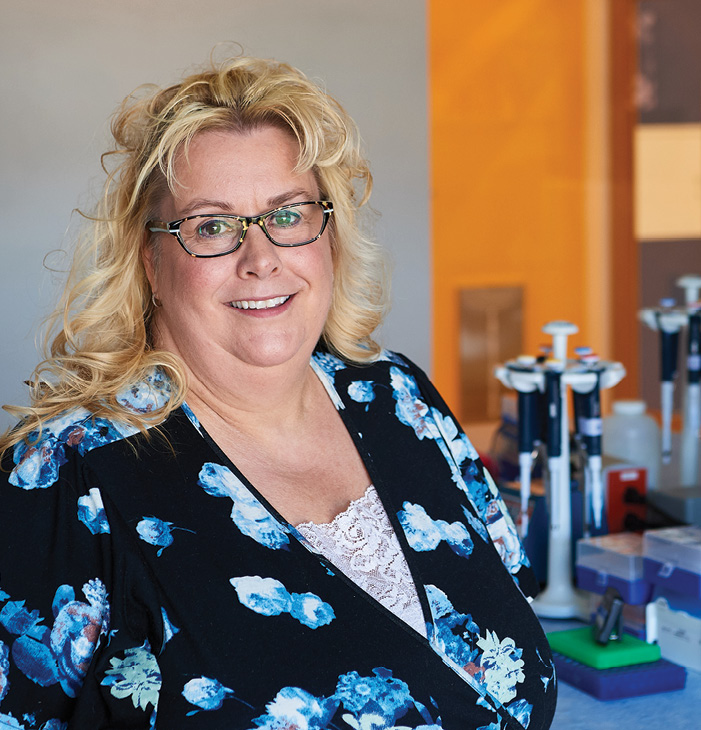
Dr. Judy Brown ’91, a diagnostic genetic researcher and educator
Although the field is still fairly young, diagnostic genetics is widespread in the United States. In fact, many people have had diagnostic genetic testing and might not even know it: All babies born in the U.S. since the 1960s have had their heel pricked and blood screened for a variety of genetic disorders.
That’s a fact that Dr. Judy Brown ’91, a diagnostic genetic researcher and educator, likes to share with members of the public as a way to introduce the field of genetics and how genetics relates to their lives.
“I like to take science that is difficult to understand, interpret and apply, and use creative ways to inform the public and my students,” said Judy, who is the director of the diagnostic genetic sciences undergraduate program and the health care genetics professional science master’s degree program at the University of Connecticut. “The field is constantly changing and the public knows little about genetics itself. And now we’re dealing with a new phenomenon of what we are calling entertainment genetics with commercial businesses providing genetics testing for consumers.”
The developments have unfolded rather quickly for a scientific field.
It’s been just over 65 years since Watson and Crick discovered the double helix or the twisted-ladder structure of deoxyribonucleic acid (DNA); it’s been approximately 32 years since scientists first characterized what later would be called CRISPR, a genetic engineering tool that allows researchers to “edit” a gene; and it’s been 28 years since Brown graduated from SUNY Oswego with a bachelor’s degree in biology and a job lined up in a SUNY Health Science Center genetic testing lab in Syracuse, N.Y.
“That’s really what got me started and allowed me to be able to dabble in everything,” Judy said. “It was a job that launched a thousand ships.”
In Syracuse, she worked in cytogenetics—the study of chromosomes—in a clinical setting, which meant she conducted chromosomal tests on the amniotic fluid from pregnant women, or the cells of malignant tumors to look for abnormalities within the number of or arrangement of the chromosomes. She was developing skills that were unique and highly prized.
After five years, she was offered the opportunity to be paid to earn a master’s degree in allied health and teach a course in cytogenetics at UConn—one of only five institutions at the time that had a program in diagnostic genetics. Once her degree was completed, she was hired as a full-time instructor and later earned a doctorate in genetics and genomics part-time while continuing to teach.
“I wear many hats depending on the day, which is why I love what I do,” Judy said. “So as far as genetics goes, right now I’m teaching it, I’m doing research with it, I’m doing community outreach with it and I’m doing testing of stem cells for it.”
For example, researchers in the state of Connecticut are doing genome editing of different types of stem cells and they’re modeling different human conditions such as Turner syndrome, Prader-Willi syndrome or other disorders for which they know the specific genetic cause.
“These researchers will go in and use this CRISPR bioediting technology to either remove a sequence or insert something to correct for an error,” Judy explained. “And my technologists and students and I will do the genetic testing to make sure that CRISPR technology has not gone off and removed different genes than it was supposed to.”
Her work will often lead her to interface with the general public or with others outside of the genetics field, and she credits her English and creative writing courses from Oswego with helping her effectively communicate with the lay person.
“Those courses have really made a big difference,” said Judy, who as a student also had a poem published in the Great Lakes Review and who was voted “Hall Ghost” because she spent so much time away from campus pursuing biology internships in the Syracuse area. “The skills I learned from my English and writing professors at Oswego have helped me write science publications and grants and assist students with their papers and thesis. I can put together presentations for the public. I’ve been interviewed on the news and I’m comfortable doing presentations.”
In fact, she advises her students to take a communications or writing course instead of an additional science, as she said it will give them the edge over their scientist peers in the field.
She calls upon her communication skills to develop public education materials about genetics for such efforts as a 4H program to educate youth about genetics testing for animals and careers in diagnostic genetics, the LEDGE (Laboratory Experience and Diagnostic Genetic Education) program for middle and high school students, presentations about genetics testing and a pocket-sized family history tool to teach that: “Despite all the advances in genetics and these complicated tests, the best genetic test is always taking the best family history,” she said. Click for more details
“If you go in to your doctor and tell him absolutely everything you can about your family, it’s going to make every genetic test that much more valuable,” Judy said. “Who from your family had what? Diabetes, heart disease, high blood pressure—all of that matters, especially now as we’re uncovering more and more about what genetic variants are linked to what conditions. Without the family history though, we would have never known to look at that particular place.”
—Margaret Spillett
Family History Around The Table
![]()
It’s the holiday season, and you and your family are gathered around the dinner table enjoying conversation and a delicious home-cooked meal. As you reminisce with relatives about fond times and create new ones for future memories, you might also learn some valuable information that could help you to lead a healthier life.
The best genetic diagnostic tool is recording your family history. Your entire genome could be sequenced, but in order to interpret how differences in your DNA sequences compare to someone else’s, it must be in relation to something. And that “in relation to something” is the family history. Do you have a history in your family of colon cancer? If so, then diagnostic genetics professionals could start to look at the region in a DNA sequence that they know might be associated with colon cancer.
So this holiday season, in addition to the toast to good health, take the opportunity to write down your family history with the people who know it best. For some tools to help you get started, visit the Center for Disease Control’s Family History website: cdc.gov/genomics/famhistory.
Entertainment Genetics: BUYER BEWARE
With genetic testing and family genealogy services such as 23andMe, MyHeritage DNA, AncestryDNA, Family Tree DNA and others becoming more prolific and mainstream, genetics experts like Dr. Judy Brown ’91 want consumers to:
1. Know where your DNA will be stored, who will have access and how it could potentially be used. Are you OK with your DNA sequence being used for scientific research or tracking things like potential suspects in crime? Most people don’t read the 100-plus page consent form that describes how their sequences may be used.
2. Be sure you want to know. In addition to finding out things like what diseases you may be prone to developing, you could also find out that your parents are not your biological parents or that you have siblings you weren’t aware of.
3. All genetic results should be viewed and interpreted by a genetics counselor or medical professional. The entertainment genetics companies do not have to follow the same guidelines or regulatory compliance as medical genetics testing companies regarding how DNA sequence variations are reported. There is a high likelihood that the results could be misinterpreted or reported to have a higher incidence rate without the correct context or whether the risk is clinically actionable.
All of Us Research Program
The All of Us Research Program is a historic effort to gather data from one million or more people living in the United States to accelerate research and improve health. By taking into account individual differences in lifestyle, environment, and biology, researchers will uncover paths toward delivering precision medicine.
![]() Learn more at: https://allofus.nih.gov/
Learn more at: https://allofus.nih.gov/
You might also like
More from Fall 2019
The Path FORWARD
An Uncharted Path When Ahmed Albajari ’19 was 12, he joined his father by working at his family’s grocery store in Brooklyn to …
Reflecting on Sheldon
As I head to another Laker hockey game with my dad and friends, we always take a moment as we …
2019 Chancellor Award Winners
Faculty and Staff: • Richard Buck ’05 M’10, director of digital services in the Office of Communications and Marketing, Excellence in Professional …







